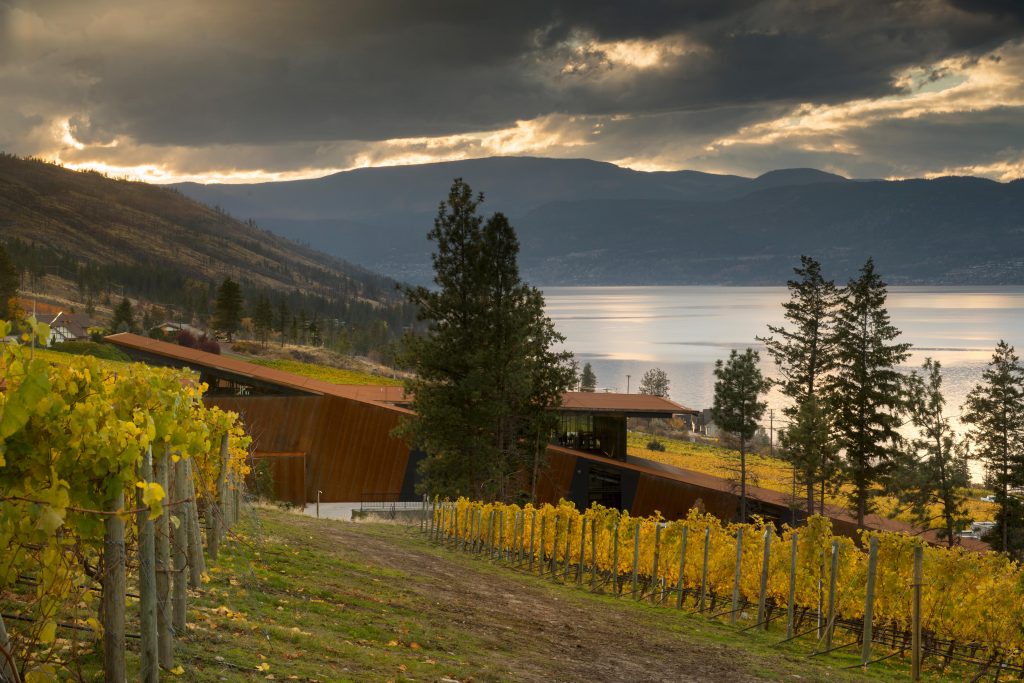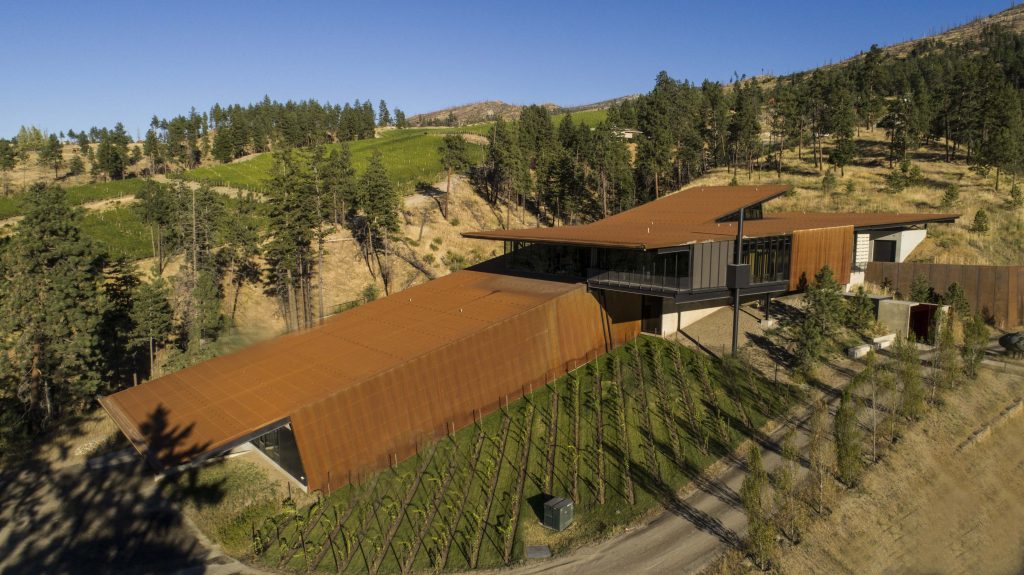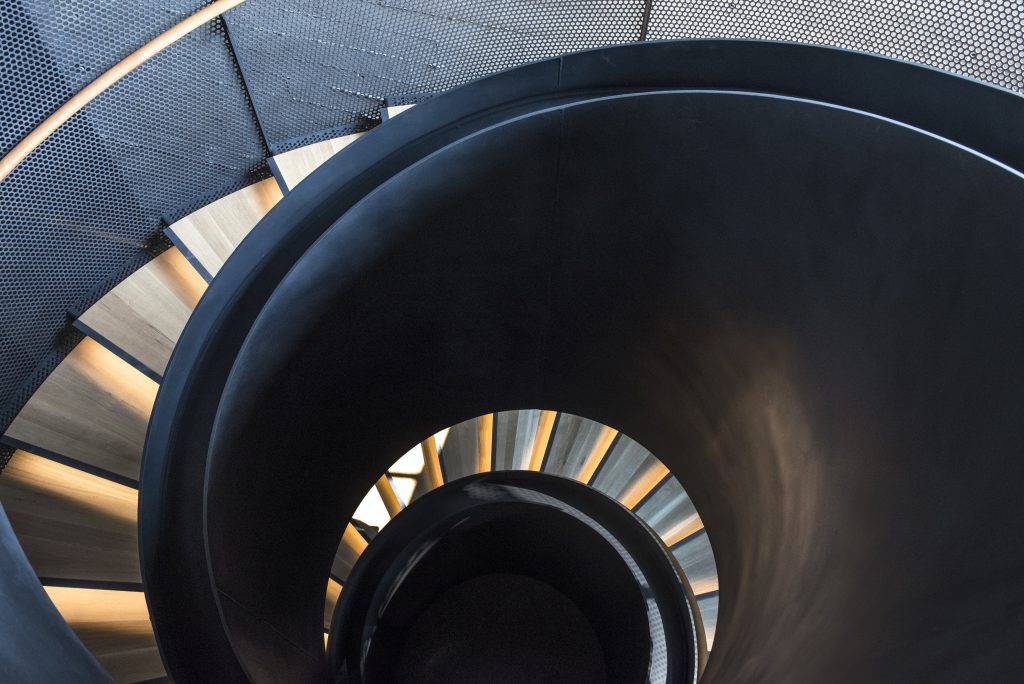Winemaking Through Gravity at Martin’s Lane
A stunning, minimalist winery in the Canadian Okanagan Valley

Nestled in the stunning Okanagan Valley of British Columbia, Canada, the renowned Mission Hill Winery has just opened a new addition to its estate. As with the previous wineries at this location, Martin’s Lane is primarily designed by Tom Kundig, the Seattle-based, award-winning architect also known for his love of gizmos—something apparent in his design. Not only does his design impress, the wine is extraordinary and they’re made with gravity flow and require zero pumping or electricity.

Unlike its big sister, the Mission Hill flagship just a half-an-hour drive away, Martin’s Lane has a more minimalist, concrete aesthetic. That said, both buildings are built to last. With longevity as a Kundig hallmark, clear instruction came from Anthony von Mandl, the founder of both wineries, who asked that the estates be built to last a minimum of 250 years. He explains that this aligns with his want to create a legacy, “not a fad.”
Some 30 years ago, when von Mandl first brought up the idea of putting the Okanagan Valley on the map as an internationally renowned wine region, he was laughed at. Since then, the valley has grown from having 44 wineries to 250—with an influx of wine experts and experienced winemakers from all over the world.
Once a glacier, the valley’s earth benefits from its varied history. The volcanic soil in the area used to be under a two-kilometer deep lake. This creates a unique growing environment—and flavor—for the grapes. As the region is located at the very northern tip of wine-growing latitude, the warming climate of the region has been beneficial to grape-growing. Also, the valley is located in a rain pocket, protected by the high mountains, explains Shane Munn, winemaker and general manager of Martin’s Lane.

The entrance to Martin’s Lane is guarded by a giant van Gogh-inspired sculpture by experimental writer and artist Douglas Coupland—a good friend of the owner. Coupland started an online contest asking for van Gogh lookalikes all around the world, and Daniel Baker was chosen from the thousands of applicants. His head was photographed and 3D-printed in the same heavily guarded facility in upstate New York that produces Jeff Koons’ pieces.
Martin’s Lane’s winemaking is dedicated to the pinot noir variety, which makes up only 2% of the world’s wine growing—the same percentage as the world’s population carrying the red hair gene, creating the basis for the van Gogh connection.

The outside of Martin’s Lane winery is partly covered in rusted steel designed by Vancouver-based Drabek Technologies. It’s an homage to the forest that was suffering from wildfires sweeping through the area in 2003. It’s a powerful inspiration, and part of a facility that makes constant reference to the world around it. For instance, the front door is designed as a representation of the architectural layout of the winery. Inside continues with a spiral staircase resembling a wisp of smoke, once again—drawn from the wildfires. The leather-clad handrails took two weeks to sew on, by hand.
As an additional detail, the natural light from the windows highlights different part of the rooms at different times during the long northern days. The storage room—with its scent of wood and concrete—resembles the wine crates, with a naturally porous quality that creates humidity well-suited for wine storage.

The barrels containing the brand’s Riesling and Pinot Noir—the only two wines in the small portfolio—are stored in a minimalist cellar. “They are two different expressions of the wines of the North Okanogan,” says Munn. The 2014 release currently has three single-vineyard Pinot Noirs. There will be a new addition when the 2015 wines are released in the new year, with the inaugural vintage of the “2015 DeHart Vineyard Pinot Noir.” All wines at Mission Hill are naturally fermented and grown without herbicides or pesticides, and will have their organic certification next year.
The tile floor in the wine library is inspired by the Olivetti Showroom in Venice, Italy, and carries one of the few colorful details in the whole building. It happens to mimic the exact shade of red found in the Pinot Noir, accompanied by golden tiles representing the Riesling varietal. The special edition bottles stored here have van Gogh ear artwork. Behind the library, one finds a hidden dining room that’s lit by handmade light fixtures from Slovakia, designed to resemble Riesling grapes.

One of the architectural highlights of Martin’s Lane is the winemaking production, which is possible without electricity. Visitors (who are welcome in small groups and by appointment) can also explore the production room. Here, gravity flow allow for winemaking without any pumping, creating a much gentler winemaking method.
“Pinot Noir is not one of those varieties that likes to be pumped around,” Munn tells us. The wine is produced in only five movements—filled in and out of the fermenter, in and out of the barrel and then bottled, all done with gravity, and aided by the fact that they are using different floors that follow the natural slope of the valley hill, leading down to the lake.
A tasting room offers stunning, grand views of the mountains, valley and lake, through giant windows. Everything in the building is chosen with purpose. And with guidance from charmingly eccentric winemaker Munn and his right-hand Lauren Berntzen Rorie, the experience is complete. For lovers of fine wine (especially of the bold red variety) and thoughtful architecture with purpose, this winery is well worth the visit.
Images courtesy of Martin’s Lane












